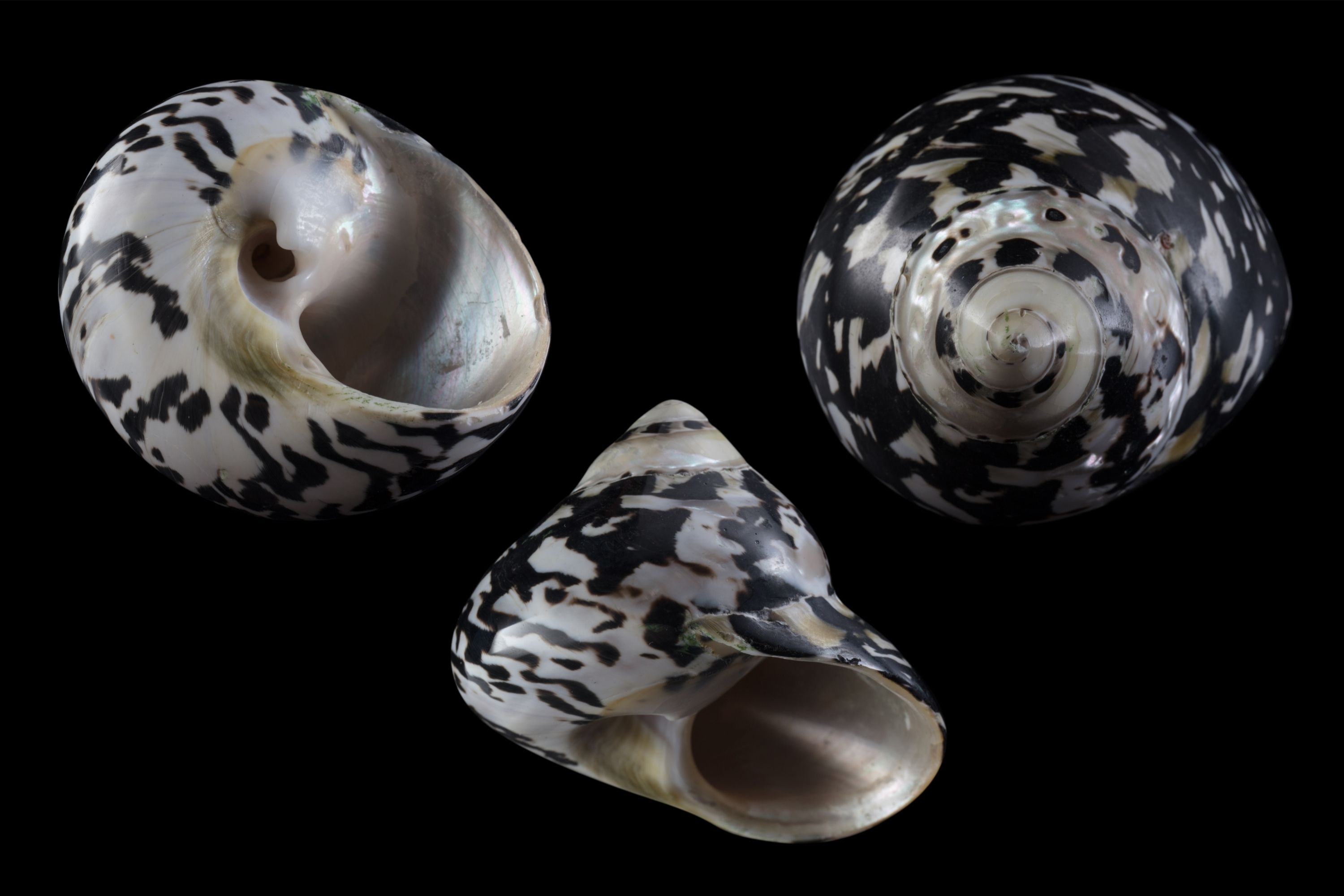West Indian top shell
(Cittarium pica)

Description
Cittarium pica, common name the West Indian top shell or magpie shell, is a species of large edible sea snail, a marine gastropod mollusk in the family Tegulidae. This species has a large black and white shell. This snail is known as "wilk" or "wilks" (or sometimes as "whelks") in the English-speaking Caribbean islands of the West Indies, where this is a popular food item. The word "will" or "wilks" can be used both as a singular form and a plural. This species is however not at all closely related to the species that are known as whelks in the U.S. and in Europe. In some Spanish-speaking parts of the Caribbean, when used as a food source Cittarium pica is known as bulgao, or simply as caracoles (snails, in Spanish). In Venezuela it is called quigua; in Cuba it is called cigua. Cittarium pica is considered the third most economically important invertebrate species in the Caribbean, after the spiny lobster (Panulirus argus) and the queen conch (Eustrombus gigas). It has gone locally extinct in some habitats due to overfishing and overexploitation. The shell of this species can be up to 137 mm in maximum dimension. It is very thick and heavy, having an outline that is between trochiform and turbiniform in shape, with rounded shoulders and a somewhat low conical form. The spire is conoidal. It contains about six convex whorls. The large body whorl is depressed-globose. The outer lip is simple. The lip is edged inside by black, or black and white. The columella is arcuate, produced above in a heavy porcellanous callous deposit, half-surrounding the umbilicus and deeply notched in the middle. The shell of Cittarium pica presents a rather wide umbilicus, which is deep and devoid of sculpture, but spirally bicostate inside. The semicircular, oblique aperture is distinguishably nacreous inside as is the case in other Trochoidea, and is circular. The parietal callus is glossy and delicate, and has a node that projects towards the umbilicus. Juvenile individuals possess shells ornamented by spiral lines and strong cords, in contrast to the nearly smooth, homogeneous surface of mature specimens. The lusterless color pattern is rather distinct, overall white with black zigzag flammules on each whorl. Those spots have a tendency to become axial lines in older, larger individuals. The upper surface is often entirely black. The aperture is commonly white, with an inner iridescence because of the nacre.
Taxonomic tree:







